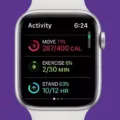The Apple Watch’s ECG feature can help detect Afib, or atrial fibrillation. In simpler words, this refers to an irregular heartbeat, which could be an indicator for a risk of stroke. In addition to the ECG app, which is available through the Health app, the Apple Watch offers heart health tracking that can provide notifications and reminders if an irregular heartbeat is detected throughout the day.
Why You Might Want to Disable the ECG Feature
There are a few reasons you might want to disable ECG – or more accurately, not use it. In most cases, there is no need to manually disable the ECG app, because it only takes an ECG if you want it to, but you might want to disable the irregular heartbeat notifications, which is separate from the ECG app.
First of all, the Apple Watch’s ECG feature has many limitations. The same goes for the irregular heartbeat notifications. The ECG is not a full ECG like you would get in a doctor’s office, so it only gives you limited data and can be inaccurate. Furthermore, if you have a pacemaker or another cardiac device, it might not be accurate, nor may the irregular heartbeat notifications be accurate.
Finally, if you already know that you have Afib, the irregular heartbeat notifications might become annoying.
How to Turn Off the ECG Feature
To turn off the Apple Watch’s irregular heartbeat feature, go to the Watch app on your iPhone and navigate to My Watch tab > Heart. Then, toggle off the “Irregular Rhythm” option.
If you want to disable the ECG app on your Apple Watch, click on your watch’s Digital Crown to show the list of installed apps. Swipe until you see the ECG app, which has an icon indicating a heart rate graph. Long-press on it and then click on the X button. Click on Delete App to confirm.
Importance of Consulting a Healthcare Provider
While an Apple Watch can provide heart monitoring advice, it does not substitute visiting a doctor. If you get an irregular heartbeat notification, or if your watch’s ECG indicates an irregular heartbeat, it’s important to consult a doctor about ECGs.
If you suspect you have Afib, a doctor can give you medical advice about wearable ECGs that you can use that are more accurate than an Apple Watch. An Apple Watch is not a medical device, so don’t rely on its results either way.
Potential Risks of Using ECG With Cardiac Devices
The risk of relying on Apple’s ECG if you have a pacemaker is potential interference with the Apple Watch’s ECG. The ECG accuracy on an Apple Watch can be interfered with if you have a pacemaker, so don’t rely on its results.
Re-enabling the ECG Feature if Needed
You can always re-enable your Apple Watch’s ECG app. To enable the ECG app on an Apple Watch, open the Health app on your phone, click on Browse, and navigate to Heart > Electrocardiograms (ECG) > Set Up ECG App.
You can also reactivate irregular rhythm notifications by going to the Watch app and navigating to My Watch > Heart and toggling on “Irregular Rhythm.”
Conclusion
We hope this guide sheds some light on how to manage the health features on an Apple Watch. It’s important to always consult a doctor for medical issues, including suspected medical issues, and not rely on readings from the app. While it can be helpful in alerting you of a potential irregular heartbeat, you cannot rely on its results conclusively.








